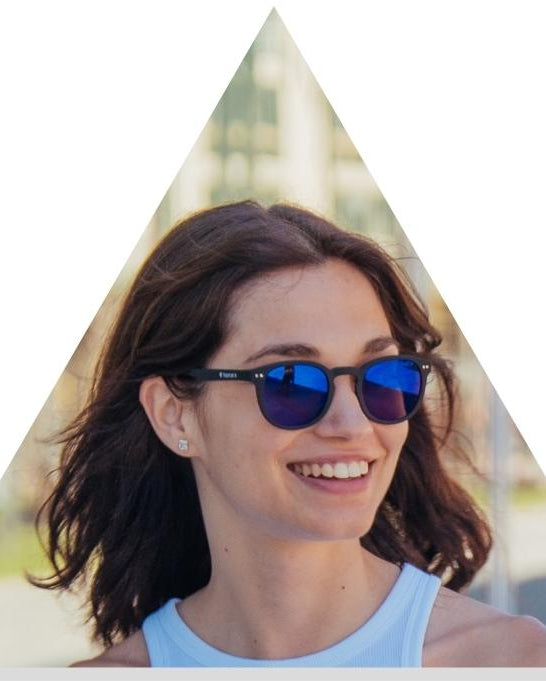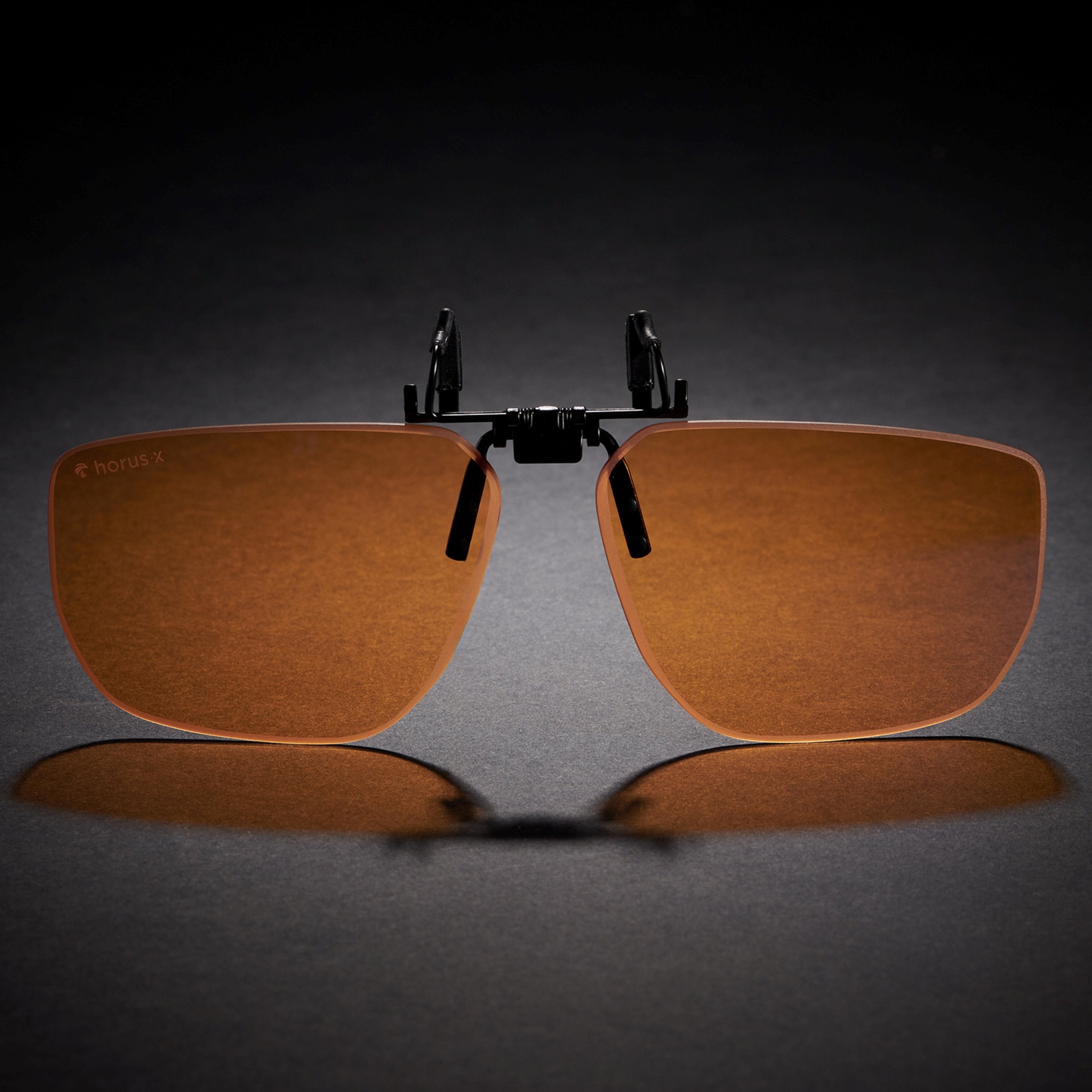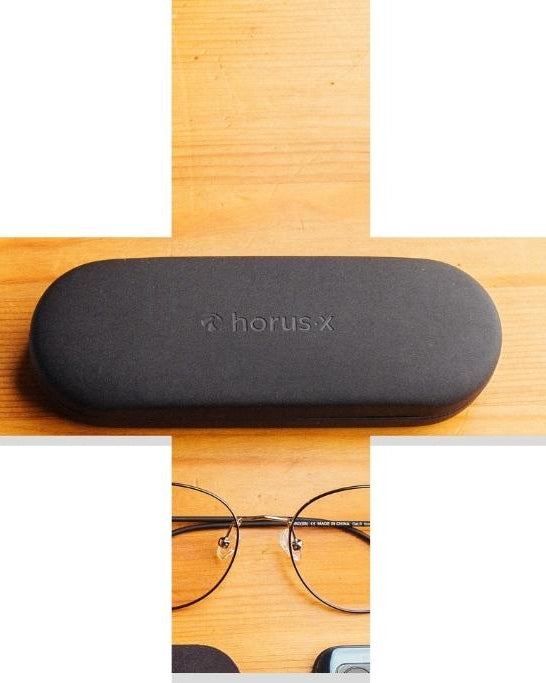Age-related macular degeneration (AMD) is fairly scary sounding, but it doesn’t have to be. As long as you have the right armor equipped in the war to protect your eyesight, you can feel confident going up against any blue light and winning the fight.
The impact of blue light on the increasing likelihood of AMD is still unclear, however, with the prevalence of screens, we are exposed to more and more harmful blue light than ever. That’s why it’s important to be knowledgeable about its potential effects and relationship to AMD.

The dangers of blue light
If blue light was Shield’s newest deadly enemy, its code file would read something like this:
Code name: Blue Light / blue light.
Energy Level: High.
Wavelength: Between 380 and 500 nanometers.
Nature: Waves or particles - or both, it depends on the researchers.
Location: In addition to sunlight, blue light likes to lurk in artificial light sources such as mobile phones, computers, tablets, LCD and LED television screens and modern lighting (via LEDs, or light-emitting diodes) 📳
Target: 👨👩👧👦 The whole population; but shows a particular interest in those aged 50 and over.
Special abilities: Overexposure to blue light leads gives it these special powers:
💥 The ability to penetrate deeper into the retina
😴 The ability to disrupt the sleep-wake cycle and the production of melatonin.
Agent note: Blue light is part of our daily life and it remains necessary to regulate our body; but at specific times and at normal doses. The problem is that we are overexposed to the dangers of blue light.
What is AMD?
Imagine you just woke up, and the first thing you want to do is throw your alarm clock across the room; but unfortunately, you can't see it, because there's a big black spot right in the middle of your vision ⚫.

Over time, you’ll find this black spot gets worse and worse, initially blinking away quickly but later taking longer and longer to vanish completely until it becomes a permanent fixture; leading to blindness.
This is - in summary - what Age-Related Macular Degeneration is. Other symptoms and effects can include:
- 🌈Colors changing in your vision
- 🥓 Distortion of objects and straight lines appearing wavy or curved
- 🔍 Difficulty in perceiving details in the center of your visual field (also known as a loss of visual acuity)
- ➖ A decrease in sensitivity to contrasting colors
- 🦇 Feeling uncomfortable at night (or anything affecting your night vision)
- 📖 Difficulties in reading, and needing more light
- ☀ Floating spots or dazzling marks in front of your eye
AMD is caused by the breakdown of cells in our retinas. That’s the light-sensitive layer of tissue at the back of the eye.
There are two types of AMD (age-related macular degeneration):
🌵 Dry AMD: this is the most common form, generally considered less severe as its progression is much slower, but unfortunately there is currently no treatment for it.
💧 Wet AMD: It is rarer but more serious, as it can lead to rapid and permanent vision loss (even if there are Wet AMD treatments to slow it down).
The link between AMD and blue light
Although its not confirmed, there are studies and researchers that suggest there is a link between AMD and blue light and your overall eye health. This becomes more apparent when you have frequent blue light exposure over long periods of time, at high levels and without adequate eye protection.
The American Macular Degeneration Foundation has corroborated this, finding that high intensity UV light and blue light exposure can adversely affect the retina and increase the risk of developing long-term AMD.
👉 Blue light is thought to cause oxidative stress in retinal cells, which may contribute to their deterioration.
However, studies that focus on the direct link between AMD and blue light are still ongoing, meaning that none of this is yet confirmed. As researchers continue to look into the long term effects blue light has on your eye health, we become more sure of its negative impact, but also on the impact of other factors that can also increase the likelihood of eye disease.
For example, age has an impact on your likelihood of developing AMD. 15% of those aged over 80 have AMD, and other factors like family history, smoking and other types of exposure can all have an impact.

Blue light however, doesn’t just affect your eye health in regards to AMD. There are other negative affects that make it even more important you protect your eyes from the dangers of blue light. For example, blue light can impact the production of melatonin, the hormone that regulates your sleep-wake cycle. Disruption of the production of melatonin can lead to eye strain, worse quality of sleep and other health concerns.
The 4 top tips for protecting our eyes from blue light
There are ways we can protect ourselves from the impact of blue light and its subsequent issues such as AMD, eye strain and an interrupted sleep pattern.
Here are Horus X’s top 4 recommendations:
🚭 Quit smoking: The risk of developing eye issues is 2-4 times more likely in heavy smokers.
🥗 Eat better: a body mass index above 30 doubles the risk of developing AMD. A healthy diet is essential to preserve your body and your eye health. (🥦 green vegetables, 🍓 red fruits, 🥜 nuts).
🌞 Protect your eyes from the sun and ultraviolet rays: A study from the London School of Hygiene & Tropical Medicine suggests that low antioxidant levels and increased sun exposure promote the appearance of certain forms of macular degeneration linked to age.
🩺 See an eye doctor regularly: Regular eye exams can help identify eye health issues early and initiate preventative treatment. For the good of your eyes, book that optician’s appointment instead of playing another round of COD.
Other preventative measures against blue light exposure
👓 Use blue light filters
Blue light blocking glasses do what they say on the tin, block blue light. Horus X glasses filter 100% of blue light at 400nm and more than 50% or 86% between 380 and 450nm (depending on the model). That means ultimate blue light protection.
In addition to this (and according to the opinions of our customers) our glasses:
- 👀 Reduce eye strain
- 🤒 Prevent headaches
- 👍 Improve visual comfort
- 🌈 Improve the rendering of your screen.
Plus, as well as being affordable, Horus X glasses come with a lifetime guarantee.
🚨 ATTENTION: Do you work outside like a madman on your smartphone? Standard sunglasses are helpful, but not all of them filter out harmful light! Consider anti-UV and anti-blue light sunglasses.
Reduce your exposure to blue light at night
In other words if you haven’t finished defeating Osmund Saddler by midnight, put down the controller and try again tomorrow.
Try to:
👉 Avoid using electronic devices before going to bed (we know, it's hard not to doomscroll till 3am).
👉 Wear anti-blue light glasses at night, so as not to impact your melatonin production.
👉 Use warm, dim lights to create a soothing and ambient atmosphere before bed.
If you’re a night worker, you can wear clear framed blue light glasses at work so you stay as unaffected as possible.

Take regular breaks
It’s essential to rest our eyes regularly. Take a 10-minute break every hour, between your campaigns is an ideal time to power down and look somewhere that isn’t a screen.
Also remember to look up from smartphones every 20 minutes. Even if you’re winning in LoL.
👉 During your rest period: Choose a point in the distance, like a wall or the top of your cellphone and look to and from it several times in a row. This relaxes the eye muscles and reduces eye fatigue.
AMD and blue light: Final thoughts
Luckily, blue light isn’t a crazy concept invented by Jigsaw, and we have far longer than 10 minutes to thwart the final trap. But even with researchers still debating its affects, it seems that early studies show blue light does increase the risk of AMD and affects the health of our eyes .
The worst part of all this is that you can combine all the risk factors without feeling anything before the age of fifty!
So, take care of yourself, put our recommendations into practice to preserve your sight in the long term.
















